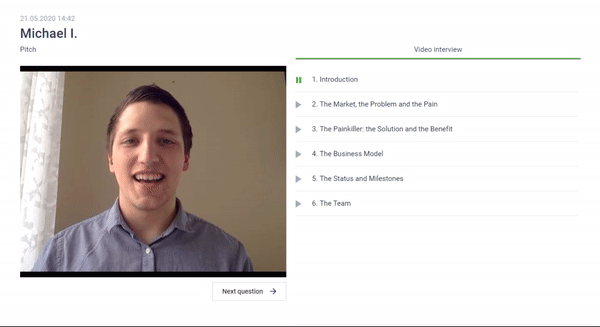3 Best Ways of Screening Candidates: Easy, Quick, and Comprehensive
For first-time recruiters and hiring managers, screening candidates can be difficult. Investing in screening approaches is crucial to capturing top skills. Explore the best 3 ways to speed up the candidate screening process.


Once you share a job post and receive applications, the great game of candidate screening begins. You face the challenge of assessing job seekers on multiple levels: whether they meet the basic requirements and necessary qualifications, whether they have the essential skill sets, whether they will be a good personal match for your corporate DNA, etc. All these screening stages are quite time-consuming; however, thanks to new technology and automation, reducing screening time by many hours and days is no longer something out of science fiction.
3 Best Ways of Screening Candidates
We will discuss three ways to help you not only reduce the time-to-hire but also to properly interact with the best candidates for your position and improve your corporate brand.
Cut-off application forms
Most application forms work like this:
- You make a list of questions for the position's basic requirements and set the correct answers, for example, a full-time job or readiness to travel.
- Once the candidate applies, they fill in the form, which automatically identifies whether they match your requirements or not. For example, suppose a person is only available for a part-time job.
- In that case, the system won't let this application reach you personally and will send an automated rejection email with the pre-set text (following your customized template).
A huge time-saver, isn't it? The types of questions available in the application forms vary. However, you usually have a choice from picking one answer, choosing a date, multiple-choice, and open questions or even uploading some kind of a file. The questions might also be either required or extra.
What are the benefits? Most candidates use platforms such as an online resume builder to generate generic resumes. You won't have to spend time looking through resumes that don't fit at all. You save both your and the candidate's time by eliminating unnecessary meetings that otherwise would be needed to show both sides that you're not a match. Providing feedback is also very important for your employer's brand, and with this tool, you can do it quickly and comprehensively.
Also, some platforms such as VCV save candidate applications for the future, creating a CV base for you anytime you feel that a particular candidate might fit any open position in your company.
Pre-recorded video interviews
Virtual interviews are nothing new: they have been in place for years, with people using Skype or Zoom instead of personal meetings. However, there's always a step ahead, and in the world of virtual interviews, pre-recorded answers to your interview questions are the one.

It works like this:
- You make a set of questions, either in a text or video form, which is an excellent way to start, to show the candidate the format. Say you are hiring a sales manager. Ask how they would solve a conflict, or what approach would you choose for this or that client, or how they would sell a new spin-off of the product, etc.
- Send a link to the applicants and wait for their answers.
The advantages are evident: you don't spend time arranging a face-to-face meeting; you get full access to their primary skills, as well as soft skills. The possibilities of a pre-recorded interview are countless: you can set a time limit for an answer, you can make an answer not re-recordable, you can select any number of questions or set the time to give to the candidate to prepare, among others.
Multiple-level assessing
Assessing soft skills and hard skills can also be done online. But you face a whole range of reasonable questions: how to make tests non-searchable, where to find tests with the best questions to check the necessary skills (especially if you're a recruiter who doesn't have a clue what Python is), how to judge results properly, how to integrate the assessment into the hiring process smoothly, etc.
Don't worry; the digital market has already thought about these challenges and found proper solutions. Whether you are looking for the best programming languages, databases or aptitude tests, there are pre-employment platforms that offer a unique set of questions to assess any skill. They have an easy-to-use and pre-build test system, allowing you to carry out an assessment and build your assessment ecosystem. You can insert images, links or files of any type. You can decide how many questions a candidate needs to answer correctly to pass, whether and how many questions should be randomized, or the time-limit for each question.
Such powerful platforms can also automatically count each candidate's score, which will help you decide quicker and choose the best among the talent pool. And you can get results along with the completed application form and a pre-recorded video interview via just one link.
Don't worry about the test results: with the candidate's approval, such services offer different web-proctoring protocols, from frame-to-frame screenshots to live anti-cheating.
These tools usually go together with internal analytics, paving the way for your future data-driven hiring decisions. The system can analyze different recruitment funnels, check whether you meet your recruitment KPIs, show how much time you spend on a vacancy, the rate at which the offers are sent, among others.
Wrapping up
Existing ways of candidate screening are continually developing. Due to COVID and the transition to remote working, the search zone for talent has broadened to a global scale, demanding that hiring tools become adaptable.
The ways covered above will certainly help you keep up with the best talent acquisition practices and stay competitive on the market as more and more companies turn to the latest hiring technologies.


